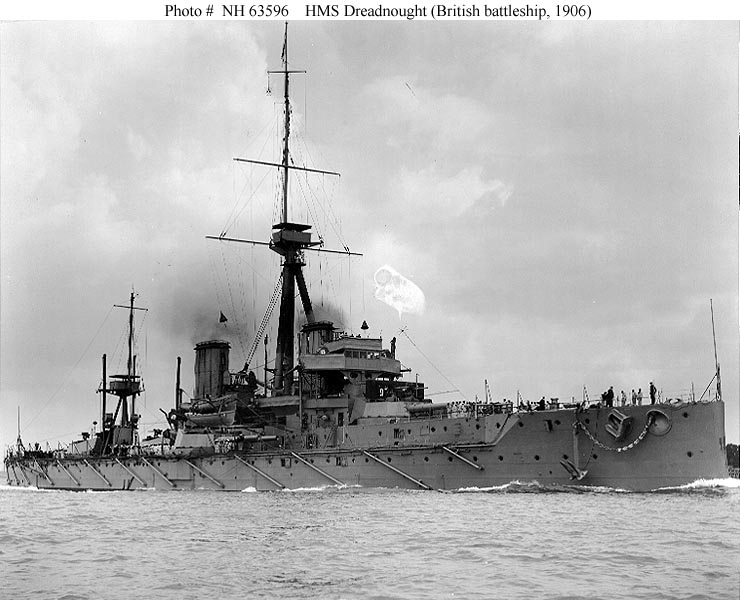

A related problem was that the shell splashes from the more numerous smaller weapons tended to obscure the splashes from the bigger guns. Gunnery developments in the late 1890s and the early 1900s, led in the United Kingdom by Percy Scott and in the United States by William Sims, were already pushing expected battle ranges out to an unprecedented 6,000 yd (5,500 m), a distance great enough to force gunners to wait for the shells to arrive before applying corrections for the next salvo. The ship was reduced to reserve in 1919 and sold for scrap two years later. In May 1916 she was relegated to coastal defence duties in the English Channel, before rejoining the Grand Fleet in 1918.

Nor did Dreadnought participate in any of the other First World War naval battles. Dreadnought did not participate in the Battle of Jutland in 1916 as she was being refitted. Ironically for a vessel designed to engage enemy battleships, her only significant action was the ramming and sinking of German submarine SM U-29 thus she became the only battleship confirmed to have sunk a submarine. Her launch helped spark a naval arms race as navies around the world, particularly the Imperial German Navy, rushed to match it in the build-up to the First World War. She was also the first capital ship to be powered by steam turbines, making her the fastest battleship in the world at the time of her completion. He convened a "Committee on Designs" to evaluate the alternative designs and to assist in the detailed design work.ĭreadnought was the first battleship of her era to have a uniform main battery, rather than having a few large guns complemented by a heavy secondary armament of smaller guns. Shortly after he assumed office in 1904, he ordered design studies for a battleship armed solely with 12 in (305 mm) guns and a speed of 21 knots (39 km/h 24 mph). Admiral Sir John "Jacky" Fisher, First Sea Lord of the Board of Admiralty, is credited as the father of Dreadnought. Likewise, the generation of ships she made obsolete became known as " pre-dreadnoughts". The ship's entry into service in 1906 represented such an advance in naval technology that her name came to be associated with an entire generation of battleships, the " dreadnoughts", as well as the class of ships named after her. HMS Dreadnought was a Royal Navy battleship whose design revolutionised naval power.


 0 kommentar(er)
0 kommentar(er)
